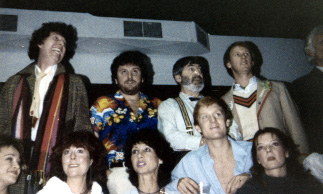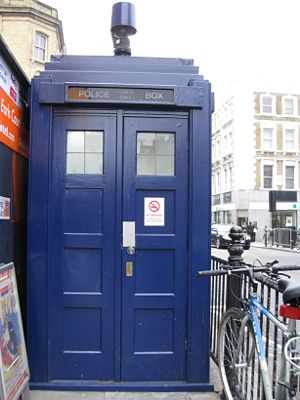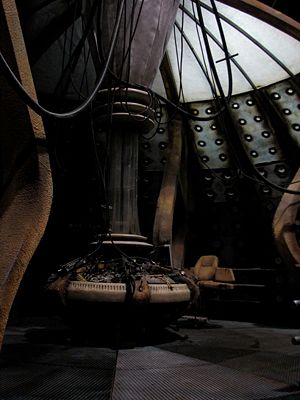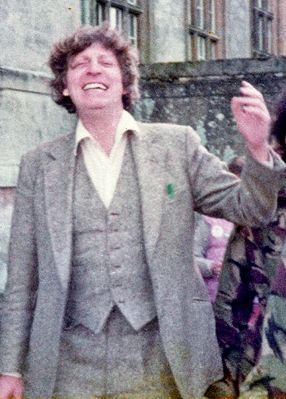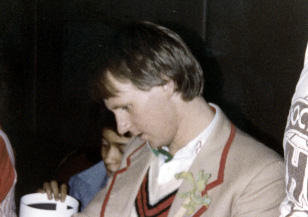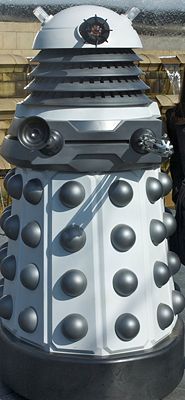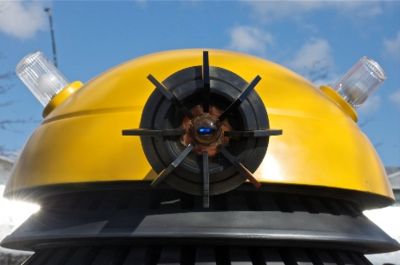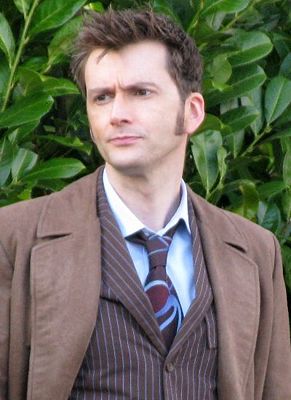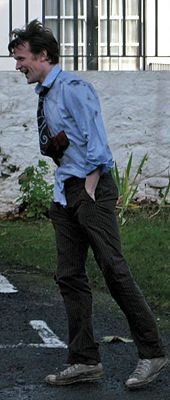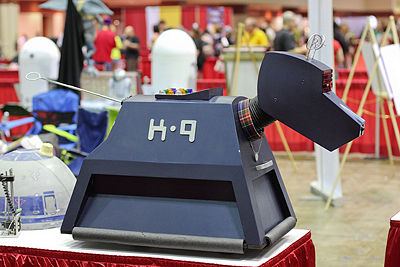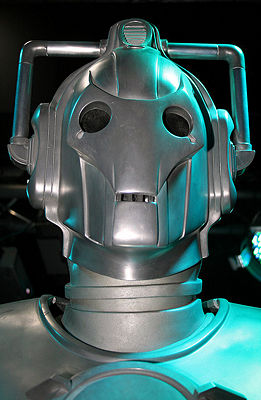|
|
(CC) Photo: Tim Schnack
|
Cast and crew of Doctor Who reunited at a 1983 fan convention celebrating 20 years of the programme. Clockwise from top left: Tom Baker (fourth Doctor, 1974-1981), John Nathan-Turner (producer, 1980-1989), Patrick Troughton (second Doctor, 1966-1969), Peter Davison (fifth Doctor, 1981-1984), and Jon Pertwee (third Doctor, 1970-1974); with 'companion' actors Sarah Sutton (1981-1983), Mark Strickson (1983-1984), Carole Ann Ford (1963-1964), Elisabeth Sladen (1974-1976), Janet Fielding (1981-1984).
|
|
|
(CC) Photo: Alun Vega
|
2010: Matt Smith on location and in costume as the Doctor while filming his first season of Doctor Who. As a contrast to his youthful appearance, Smith portrays the Doctor as an eccentric, professorial figure.
|
|
|
(CC) Photo: Robynne Blume
|
Police box mounted with a modern surveillance camera located outside Earl's Court tube station in London. The TARDIS exterior has been based on this design since the first episode of Doctor Who in 1963. The time machine is supposed to change shape to blend in with its surroundings, but the mechanism broke in the first story, and so the TARDIS has stayed like a police box ever since. In real life, the decision was made to avoid the cost of building a new TARDIS for each serial.
|
|
|
(CC) Photo: Roo Reynolds
|
As well as being a time machine, the TARDIS is bigger on the inside than the outside, with the 'console room' from which the craft is piloted most frequently shown. Several designs have appeared over the years, all featuring a hexagonal console, roundels, and a central column that rises and falls while the TARDIS is in flight. This is the first console room of the 21st-century series, envisaged as a living, coral-like structure.
|
|
|
(CC) Photo: Richard Lemarchand
|
Tom Baker played the Doctor for the longest period on television, from 1974 to 1981. His trademark scarf became an iconic image from the programme. This photo shows Baker soon after leaving the role, at a 20th-anniversary convention.
|
|
|
(CC) Photo: Tim Schnack
|
Peter Davison was the youngest actor to play the Doctor in the original 1963-1989 series, taking on the role from 1981 to 1984. Wearing his cricket-inspired outfit, here he meets fans at a 1983 convention.
|
|
|
(CC) Photo: Melinda Seckington
|
The Daleks are terrifying, Nazi-inspired creatures in the science fiction series Doctor Who. Though the design has changed little since their first appearance in 1963, this larger-than-usual and somewhat cartoonish redesigned version of 2010 proved controversial with some fans. The front appendages include an eyestalk, interface device that uncannily resembles a sink plunger, and an exterminating weapon.
|
|
|
(CC) Photo: Melinda Seckington
|
Top of one of the 2010 series Daleks. The design is inspired by the 'movie Daleks' that fought Peter Cushing's human Doctor in two 1960s films that are not part of the television series fictional universe.
|
|
|
(CC) Photo: Alun Vega
|
The tenth television incarnation of the Doctor was played by David Tennant from 2005 to 2010.
|
|
|
(CC) Photo: Alun Vega
|
2009: Matt Smith's first episode as the Doctor carried on the tradition of the new Doctor at first seen in the ruins of the previous Doctor's outfit - in this case, what remains of the suit worn by David Tennant.
|
|
|
(CC) Photo: Sam Howzit
|
The robot dog K-9 appeared in Doctor Who and several spin-offs, including his own series.
|
|
|
(CC) Photo: Keven Law
|
The Cybermen first appeared in 1966 - steel giants who were once human but had replaced their weakened organs, in the process becoming devoid of emotion. Their design varied substantially over the years; this is the 2006 version.
|
|

